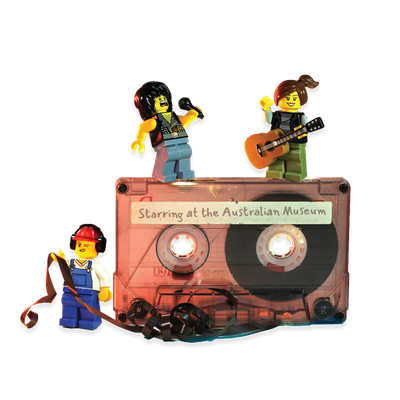Your search returned 10 results
By Page Type
By Tag
- All
- fish (966)
- blog (696)
- fishes of sydney harbour (401)
- First Nations (299)
- Blog (236)
- AMRI (169)
- archives (164)
- Eureka Prizes (146)
- Aboriginal and Torres Strait Islander (135)
- insect (126)
- Ichthyology (124)
- geoscience (109)
- minerals (102)
- climate change (99)
- podcast (94)
- Fish (91)
- Anthropology (89)
- International collections (80)
- Minerals Gallery (78)
- wildlife of sydney (78)
- Labridae (77)
- frog (74)
- gemstone (70)
- photography (66)
- history (64)
- Mollusca (60)
- gem (59)
- staff (59)
- Birds (56)
- Gems (56)
- Indonesia (56)
- education (56)
- shark (55)
- AMplify (54)
- people (53)
- earth sciences (50)
- exhibition (50)
- past exhibitions (50)
- Gobiidae (48)
- sustainability (46)
- Pomacentridae (45)
- Serranidae (44)
- lifelong learning (42)
- science (42)
- Earth and Environmental Science (41)
- Syngnathidae (41)
- Ancient Egypt (40)
- Bali (40)
- bird (40)
- dangerous australians (40)
-
Magma
https://australian.museum/learn/minerals/shaping-earth/magma/Magma is hot molten mobile rock. Igneous rocks form when magma cools and solidifies. Magmas come out of active volcanoes as lavas.
-
Soils
https://australian.museum/learn/minerals/shaping-earth/soils/Soils are made up of three layers and are thickest where they are older and in warm and wet environments.
-
Tektites
https://australian.museum/learn/minerals/shaping-earth/tektites/Tektites are small, pebble-like glassy objects of Earth material that have been melted by meteorite impact, splashed up into our atmosphere, and fallen to Earth again under gravity.
-
Classification of sedimentary rocks
https://australian.museum/learn/minerals/shaping-earth/classification-of-sedimentary-rocks/Sedimentary rocks are classified according to the predominant grain size present, as well as by their mineral content.
-
Earth: Rocks and minerals
https://australian.museum/learn/teachers/at-the-museum/earth-rocks-minerals/Explore a range of rocks and minerals in this hands-on Museum educator-led program.
-
Concretions, Thunder Eggs and Geodes
https://australian.museum/learn/minerals/shaping-earth/concretions-thunder-eggs-and-geodes/Concretions are compact, often rounded, accumulations of mineral matter that form inside sedimentary rocks such as shale and sandstone or in soil.
-
Structure of volcanoes
https://australian.museum/learn/minerals/shaping-earth/structure-of-volcanoes/Although volcanoes are often seen as being destructive they are also constructive. They add more land to the surface of the Earth and, when weathered, provide us with a nutrient-rich soil for agriculture.
-
Looking inside the Earth
https://australian.museum/learn/minerals/shaping-earth/looking-inside-the-earth/The internal structure of the Earth consists of three main parts, the crust, mantle and core. The division between the crust and the mantle is called the Moho.
-
Radioactive dating
https://australian.museum/learn/minerals/shaping-earth/radioactive-dating/Radioactive dating is a method of dating rocks and minerals using radioactive isotopes. This method is useful for igneous and metamorphic rocks, which cannot be dated by the stratigraphic correlation method used for sedimentary rocks.
-
The 'Barratta' Meteorite
https://australian.museum/learn/collections/natural-science/mineralogy/mineralogy-collection-the-barratta-meteorite/The story of the 'Barratta meteorite' has a rather uncertain beginning. One version claims that in 1859 a stockman witnessed spectacular light and sound effects at a place where pieces of the meteorite were later found.
-
Discover more
2025 Australian Geographic Nature Photographer of the Year
Special exhibition
Free entry
Now open -
Discover more
Unfinished Business
Special exhibition
Free entry
Now open -
Discover more
Wansolmoana
Permanent exhibition
Free entry
Open daily -
Find out more
Burra
Permanent kids learning space
Free entry
10am - 4.30pm![]()
-
Discover more
Minerals
Permanent exhibition
Free entry
Open daily![]()




